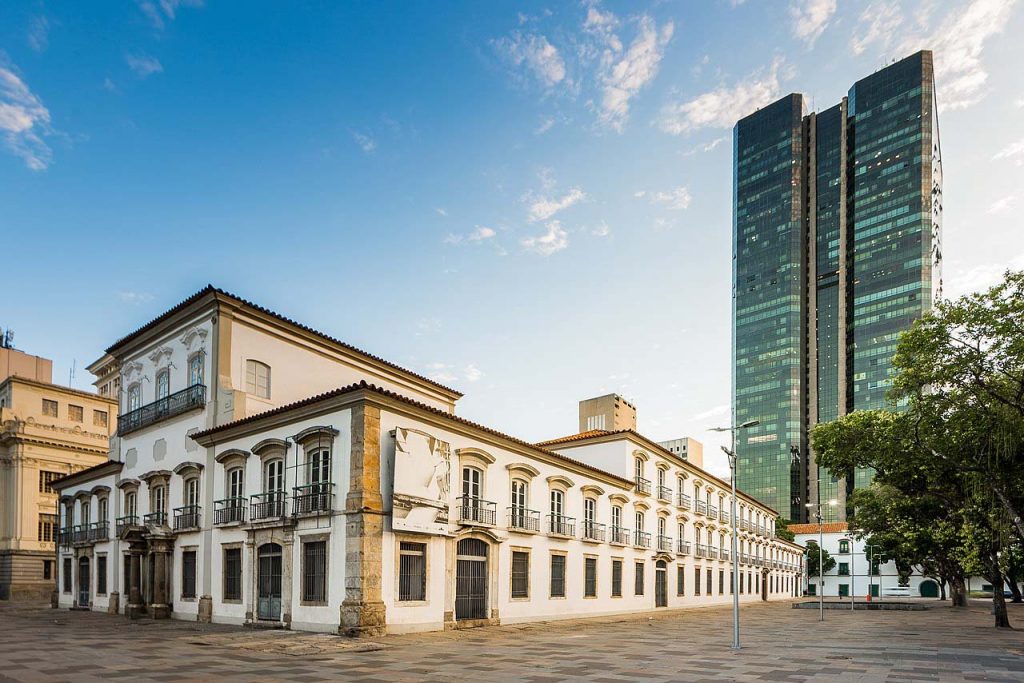SOUTH AMERICA, EAST
- Brasil: Rio de Janeiro, part 1
- Brasil: Rio de Janeiro, part 2
- Brasil: Salvador, Manaus, Rio Negro
- Iguazu Falls
- Montevideo and Asunción
- Argentina: Buenos Aires
- Patagonia
On the morning of my second day in Rio, I hurried to the usually crowded train that takes tourists up Corcovado Mountain, which translates to Hunchback. I was far from being the first in line, but at that time of the day, the wait was bearable. The ascent itself is fascinating. The train takes you 20 minutes through the Tijuca Tropical Forest, offering views of exotic tropical fruits and unusual trees wrapped in lianas.
The 30-meter (plus an 8-meter pedestal) statue of Christ the Redeemer (Cristo Redentor) atop the mountain is recognized as one of the Seven Modern Wonders of the World. It is among the most famous and popular monuments globally, created between 1922 and 1931 by the French-Polish sculptor Paul Landowski. From here, you get a magnificent view of the surrounding area, broader than the one from Sugarloaf Mountain, though to me it felt a bit “aerial.” That said, the view is undeniably remarkable. While near the statue, I met a group of elderly Israeli tourists and asked them which company they were traveling with. When they reverted the question to me, I said that I was traveling solo—something they found difficult to comprehend.


After descending from Corcovado, I headed to Copacabana. Taking a swim at Copacabana—what could be more iconic for a visit to Rio? Alas, it wasn’t to be. There are no changing rooms, and leaving belongings unattended is strongly discouraged. Beautiful women so plantiful at the famous Rio festival were nowhere to be seen, neither here nor elsewhere in the city. They must be stored away somewhere along with other props until the next festival. The curve of Copacabana is stunning, but the next beach, Ipanema, is considered more beautiful and aristocratic. However, I didn’t make it there, walking along Copacabana’s sand.



Instead, I went to Rio’s Botanical Garden (Jardim Botânico do Rio de Janeiro) and thoroughly enjoyed it. This is perhaps the only botanical garden I have visited in my travels, apart from Butchart Gardens on Victoria Island in Canada. This green haven in Rio was established in 1808, initially intended to acclimate nutmeg, black pepper, and other spice plants, imported from the West Indies, to Brazil. Over time, it evolved into a full-fledged botanical garden with 6,500 plant species, including the giant Victoria Amazonica water lilies on Frei Leandro Lake. The garden spans a massive 140 hectares, with the botanical section occupying 54 hectares, the rest remaining a wild forest. From the entrance, the famous Avenue of Royal Palms stretches 750 meters deep into the garden. Other scenic spots include the Cactus Garden, the Orchidarium, the Japanese Garden, and a greenhouse for carnivorous plants. Among the trees, you might spot toucans, marmosets, capuchin monkeys, lizards, and squirrels. I photographed there a large tree by the lake with striking knotted roots jutting out of the ground, but unfortunately, that photo didn’t survive the time.



I walked extensively around Rio and also used various transportation modes—metro, bus, and minivans—never feeling any of the danger the guidebooks warned about. Perhaps I was just lucky. Naturally, I avoided venturing into the favelas. Architecturally, apart from a few quarters in the city center, the adjacent old town, and several gems elsewhere, Rio is a fairly ordinary city. However, its unique setting and ambiance make it breathtakingly beautiful. During one of my walks, I explored the old town up to the São Bento Monastery (Mosteiro de São Bento), reminiscent in style of traditional Portuguese churches. I then returned to Praça Quinze de Novembro (or just Praça XV) with the eclectic Palácio Tiradentes from 1926, home to Rio’s Legislative Assembly, and the 18th-century Paço Imperial, once a residence for colonial governors, the king, and Brazilian emperors, now a cultural center.
From the ferry terminal (Terminal CCR Barcas Praça XV) nearby, I crossed Guanabara Bay to Niterói on the opposite shore but returned shortly after as there wasn’t much for me to do at the beach, and the Museum of Contemporary Art was too far to walk. Nevertheless, the ferry ride with views of Rio and the bridge spanning the bay was delightful. Incidentally, the bay, which early explorers reached in January and mistook for a river’s mouth, was the reason for the city to get its name: Rio de Janeiro, or January River.


On the last of the four days I allocated to Rio, the forecast promised heat (up to that point, the weather had been cool thanks to rains just before my arrival), so I decided to leave for the mountain city of Petrópolis, the summer retreat for Brazil’s emperors and aristocracy in the 19th century, hoping to escape the heat. Named after Emperor Pedro II, who is buried in the local cathedral, Petrópolis turned out to be not much cooler. After visiting the Imperial Palace, now an Imperial Museum, and strolling around the city, I was glad to settle into an air-conditioned bus for the return trip to Rio, enjoying the mountain scenery. I planned to wander downtown further, but exhaustion and the need to rest before an early flight to Salvador made me call it a day.


